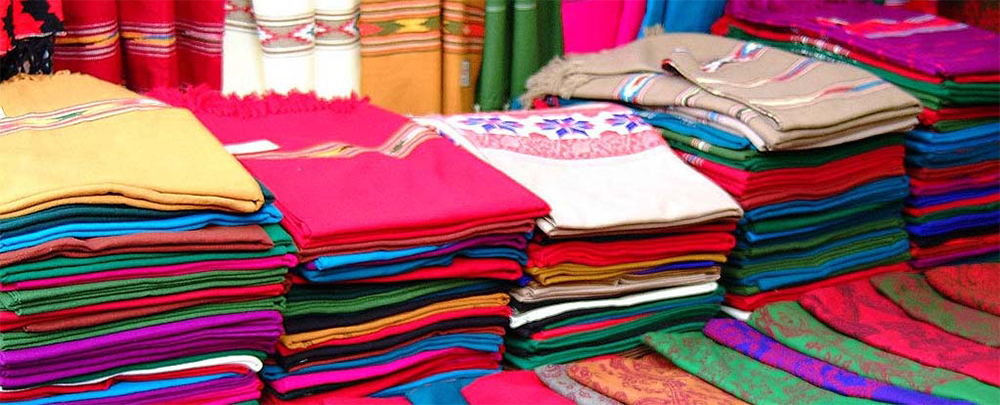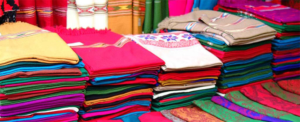
The Periscope Report trade related news round-up from a variety of sources for 08th April 2017.
[Zimbabwe] Clothing industry experiences 165% growth
 ZIMBABWE’S clothing and textiles manufacturing sector has experienced a growth trajectory over the past five years, with exports growing 165% to $8,2 million in 2016 from 2012 figures, a latest report has shown.Information gathered from ZimTrade, the country’s export promotion body, revealed that despite a plethora of challenges affecting the clothing and textile industry, the sector was still bringing in foreign currency through exports.“Zimbabwe’s clothing and textiles manufacturing sector has experienced a growth trajectory over the past 5 years, with exports growing from $3,1 million in 2012 to $8,2 million in 2016,” said ZimTrade. “Zimbabwe’s major export destination for clothing and textiles was South Africa with a share of 80%, while the rest of Sadc contributed 16%.” According to the Trade Map, the global import bill for clothing and textiles was worth $428 billion in 2015, with the United States, Germany, Japan and the United Kingdom being the largest importers. See my indepth analysis of this report – The devil is in the detail, a closer look at Zimbabwe’s celebrated 165% export growth in the clothing and textile sector
ZIMBABWE’S clothing and textiles manufacturing sector has experienced a growth trajectory over the past five years, with exports growing 165% to $8,2 million in 2016 from 2012 figures, a latest report has shown.Information gathered from ZimTrade, the country’s export promotion body, revealed that despite a plethora of challenges affecting the clothing and textile industry, the sector was still bringing in foreign currency through exports.“Zimbabwe’s clothing and textiles manufacturing sector has experienced a growth trajectory over the past 5 years, with exports growing from $3,1 million in 2012 to $8,2 million in 2016,” said ZimTrade. “Zimbabwe’s major export destination for clothing and textiles was South Africa with a share of 80%, while the rest of Sadc contributed 16%.” According to the Trade Map, the global import bill for clothing and textiles was worth $428 billion in 2015, with the United States, Germany, Japan and the United Kingdom being the largest importers. See my indepth analysis of this report – The devil is in the detail, a closer look at Zimbabwe’s celebrated 165% export growth in the clothing and textile sector
Cross-border e-commerce considered a growth rocket for sub-Saharan Africa retailers
DHL Express, the world’s leading international express services provider, has published research highlighting the significant growth opportunity for retailers and manufacturers with an international online product offering. The report – The 21st Century Spice Trade: A Guide to the Cross-Border E-Commerce Opportunity – looks in detail at the markets and products that offer the highest growth potential, the motivations and preferences of customers making international online purchases and the success factors for online retailers that wish to expand overseas. It focuses in particular on the opportunity for premium products and service offerings, with higher basket values accounting for a significantly higher proportion of orders in cross-border transactions.
[Zimbabwe] Cash shortages hit car importers
The number of imported vehicles declined last year for the second time in five years in what motor dealers have linked to cash shortages.Official government statistics show that vehicle imports decreased by 5,3 percent in 2016 from 70 251 to 66 479 on the back of toughening economic conditions and cash shortages.Transport ministry official Godfrey Jombe last week told delegates at a Zimbabwe Energy Regulatory Authority-organised Global Fuel Economy Initiative inception meeting that the country’s car expenditure was slowing down. “I think this is because of the shrinking economy and then again when we look at the years between 2007-2014, there was a gradual increase in the registration of vehicles in this country mainly because there was better access to foreign currency and then of course, prior to 2007” he said. Registration peaked at 81 840 in 2014 from 78 756 in 2013 and 66 885 in 2012. In 2011, a total of 68 116 vehicles were registered, up from the 46 411 registered in 2010.In 2009, when the country abandoned its worthless currency for the United States Dollar-dominated multi-currency system, vehicle registration stood at 30 612 from 24 324 in 2008 and 23 178 in 2007. Cumulatively, between 2008 to 2016 registered vehicles swelled by 70,8 percent.
[Zimbabwe] Textile sector starves local market
The textile sector in Zimbabwe exported goods worth over R2 billion to South Africa since 2009, but none of these goods were made available to local clothing manufacturers, an official has said.Zimbabwe Clothing Manufacturers’ Association chairperson, Jeremy Youmans, told NewsDay that even though the textile sector exported R2 billion worth of goods to South Africa since 2009, the clothing sector did not benefit. “Since 2009, there has been over R2 billion worth of textiles exported to South Africa from Zimbabwe,” he said. “Obviously none of these textile goods were made available to local clothing manufacturers, so while it earned the country external funds, some of these were needed to fund imports of fabric, which was not available locally due to it having been exported.” Youmans said the sector was importing poly-cotton fabrics, as these were not produced locally. As a result, the country is losing millions of dollars through imports.
Image Credit: Catch The Detail